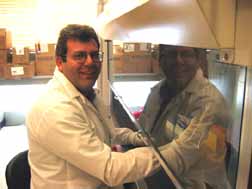Body
 |
Research engineer Phil Santangelo works in professor Gang Bao’s cell culture facility in the Wallace H. Coulter Department of Biomedical Engineering at Georgia Tech and Emory University in Atlanta. Photo courtesy of: Phil Santangelo |
Scientists have used a powerful molecular imaging technique to see inside living cells infected with the most pervasive and potentially fatal childhood respiratory virus known to medicine—respiratory syncytial virus (RSV).
…
Want to continue?
Log in or create a FREE account.
By logging in you agree to receive communication from Quality Digest.
Privacy Policy.
Add new comment